Arden is an unincorporated community located in southern Buncombe County, North Carolina, United States. Arden is considered to be approximately the area between Skyland and Fletcher near the Henderson County line. Arden's ZIP code is 28704. Its post office serves Royal Pines and Avery Creek census designated places to the east and the area to the west of the post office. Arden is part of the Asheville Metropolitan Statistical Area.
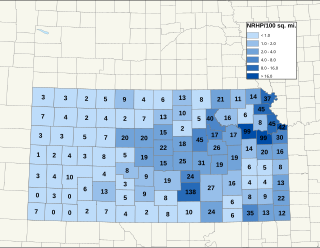
There are over 1,600 buildings, sites, districts, and objects in Kansas listed on the National Register of Historic Places in Kansas. NRHP listings appear in 101 of the state's 105 counties.
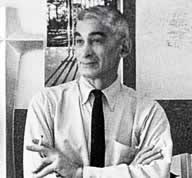
Charles M. Goodman was an American architect who made a name for his modern designs in suburban Washington, D.C., after World War II. While his work has a regional feel, he ignored the colonial revival look so popular in Virginia. Goodman was quoted in the 1968 survey book Architecture in Virginia as saying that he aimed to "get away from straight historical reproduction."

The Luther Monument is a public artwork located in front of Luther Place Memorial Church in Washington, D.C., United States. The monument to Martin Luther, the theologian and Protestant Reformer, is a bronze, full-length portrait. It is a copy of the statue created by Ernst Friedrich August Rietschel as part of the 1868 Luther Monument in Worms, Germany. The version in Washington, D.C., inspired the installation of many other castings across the U.S. The statue is a contributing property to the Luther Place Memorial Church's listing on the National Register of Historic Places (NRHP) and District of Columbia Inventory of Historic Sites (DCIHS). It is also a contributing property to the Greater Fourteenth Street Historic District, which is also listed on the NRHP and DCIHS.

The outdoor statue of Benjamin Franklin in Washington, D.C., is located near the intersection of 12th Street and Pennsylvania Avenue NW, in front of the Old Post Office. The statue was a gift from Stilson Hutchins, founder of The Washington Post, who wanted to display his and the newspaper's stature in the city. The designer, Ernst Plassmann, and sculptor, Jacques Jouvenal, were both German-American artists. The architect of the memorial was J. F. Manning.
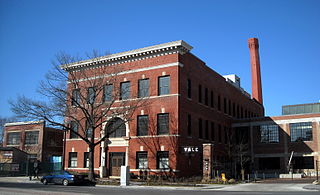
The Yale Steam Laundry is a historic residence located on 437–443 New York Avenue, Northwest, Washington, D.C., in the Mount Vernon Square neighborhood.

The Alexander Crummell School is an Elizabethan Revival school building, located at 1900 Gallaudet Street and Kendall Street, Northeast, Washington, D.C., in the Ivy City neighborhood.

The U.S. Government Accountability Office Building is an historic government office building, the headquarters of the Government Accountability Office located at 441 G Street NW in Washington, D.C., adjacent to the National Building Museum.
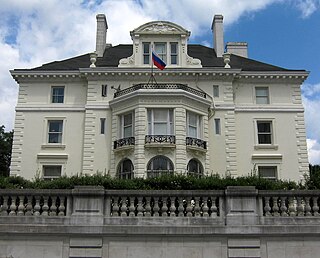
The Lothrop Mansion, also known as the Alvin Mason Lothrop House, is an historic home, located at 2001 Connecticut Avenue, Northwest, Washington, D.C., in the Kalorama Triangle neighborhood.
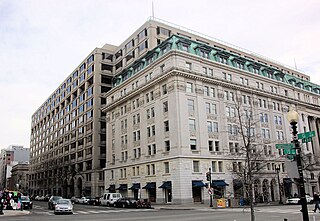
The Chase's Theater and Riggs Building, also known as the Keith-Albee Theater and the Keith-Albee Building, was a historic building located at 1426 G Street and 615-627 15th Street, Northwest, Washington, D.C., in the city's Downtown area.

Waggaman-Ray Commercial Row consists of four historic structures located in the Northwest Quadrant of Washington, D.C.: 1141, 1143, 1145 Connecticut Avenue, N.W. The buildings are two and three stories and utilize restrained classical architecture to project an image of sophisticated elegance. The buildings feature planar facades with classical design motifs in low-relief.

Sutton & Whitney was an architecture firm based in Portland, Oregon, United States, operating from 1912 to 1950. Its principal partners were Albert Sutton (1867–1923) and Harrison A. Whitney (1877–1962). In 1934, it became Sutton, Whitney & Aandahl, after full membership was granted to Frederick Aandahl (1887–1950), who had already been working for the firm as chief draftsman since 1919 and as an associate since 1923.

Julian Franklin Everett was an American architect known for the buildings he designed in Seattle, Washington. His work includes a synagogue for the Temple de Hirsch congregation (1908) and the Pioneer Square Comfort Station and Pergola in Seattle (1909), now a historic landmark. Some of his works, including the temple and a building for Pathé Exchange, were later demolished, while others are listed on the National Register of Historic Places (NRHP).
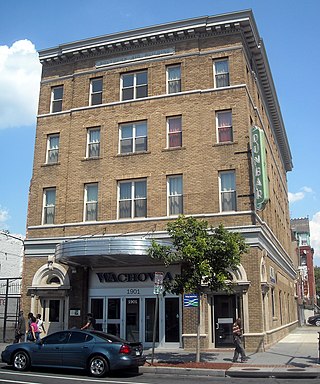
Isaiah T. Hatton (1883–1921) was an architect in the United States known for his designs of buildings for his fellow African Americans. Several are listed on the National Register of Historic Places.

Albert L. Harris was an American architect who worked primarily in Washington, D.C. He was born in Wales and emigrated to the United States as a young child. He worked for architectural firms in Chicago and Baltimore and then Washington, where he also obtained an architectural degree from George Washington University. He was a part-time professor there while also working for the US Navy and then the city of Washington where he served as the city's Municipal Architect from 1921 until his death in 1933. A number of his works are listed on the National Register of Historic Places (NRHP).
James H. Nave was an American architect based in Lewiston, Idaho. He designed a number of works which are listed on the National Register of Historic Places (NRHP) for their architecture.















